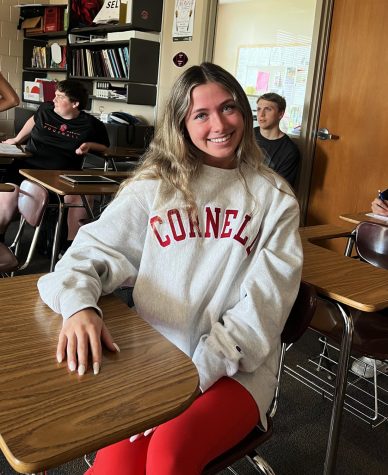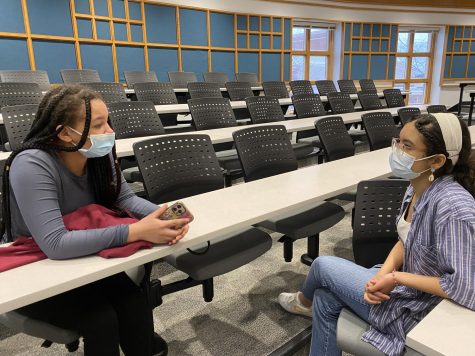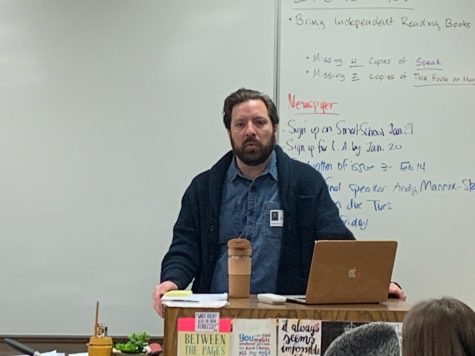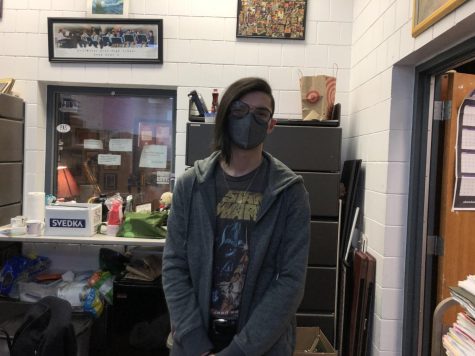Ten years passed since duke impersonator scandal
January 13, 2016
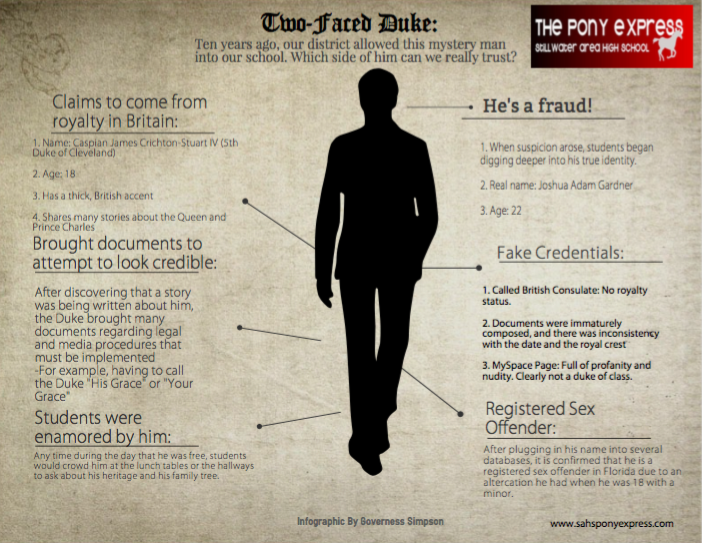 Practice lockdown drills have long been seen as a joke to the student body, but the story of the “Duke” that has emerged 10 years ago has since prompted faculty to take caution when dealing with visitors.Infographic Project
Practice lockdown drills have long been seen as a joke to the student body, but the story of the “Duke” that has emerged 10 years ago has since prompted faculty to take caution when dealing with visitors.Infographic Project
In December of 2005, a man claimed to be Caspian James Crichton-Stuart IV, or the 5th Duke of Cleveland, visited the high school pretending to be royalty. Over three visits, however, newspaper students began to grow suspicious of him, and by January 2006, the man was exposed to be Joshua Adam Gardner, a registered sex offender.
Gardner met a student on MySpace and then visited the high school.
“It’s unknown how this connection was made on MySpace,” newspaper teacher Rachel Steil stated. “For two days, this man entered the high school with the student. He told the role of an 18 year old senior.”
For two days, this man entered the high school with the student. He told the role of an 18 year old senior.
— Rachel Steil
From a first glance, the Duke did not stand out from the crowd. The students were fascinated by him and bombarded the Duke.
“He just looked like an average student to us. He would wear a button-down shirt and jeans. He also had a very thick British accent and portrayed himself as royalty. The [newspaper] kids went to interview him during first hour right at the front of my door. He told stories about the Queen, Prince Charles, and his cousins. Everyone was dazzled by him. We thought he was the real deal,” Steil said.
While some students fell head-over-heels for the Duke, others questioned whether or not he was royalty based on the information given.
“Matt Murphy, the Editor-in-Chief at the time, coincidentally was reading a book about British lineage and ancestory. Some of the things he heard that morning were not consistent to what he read to be true about royalty. Everyone else was ignoring him, though; we just thought it was ridiculous Matt could assume such a thing,” Steil said.
Many of those suspicions died down over time, and the newspaper students proceeded to write a story about the Duke’s visit. The student writing the story, Karlee Weinmann soon discovered that there was very little information regarding the Duke.
“Karlee decided to write the story, so she started researching and looking for information and how the Duke was related to the Queen. She was having a hard time finding anything on the Internet or in books. The student that was guiding the Duke didn’t share any information, either. We were at a deadend, and the story deadline was approaching. We just decided to drop the case during winter break and come back to researching in January,” Steil said.
After winter break, there was even more uncertainty regarding the Duke, eventually the story was dropped to prevent any libelous information from spreading.
“We came back from winter break, and the student requested to see a copy of the article before it went to press. I told them I was not legally obligated to show the story [to the student[. This encounter made me more unsure of the story, so I decided not to publish it,” Steil said.
Later on the following day, Steil was called into the principal’s office, as the Duke was in the building and was displaying legal documents that required her signature. However, an initial look at the documents showed that they lacked formality.
“They were very immature in how they were composed. There was no date, and there was no consistency in the paper or the royal crest used,” Steil said.
Steil and her newspaper students then contacted the British Consulate in Chicago to verify the documents, and according to them, the documents were proved false.
“We called the British Consulate in Chicago; she said that there documents were not accurate. All the people the Duke referred to were not actually royalty,” Steil said.
The evidence continued to pile up against the proclaimed Duke when Steil received a call that evening from her students to go onto MySpace and check out his profile, which was identified by students who were friends with the student.
“There was nudity and profanity; it was clear that this man wasn’t a Duke. In addition, it stated that 1983 was his birthdate, which would have made him 22, not 18. I forwarded this to Mrs. Ticiu, the assistant principal, and when we checked it out the following morning, his page was completely wiped clean. Fortunately, the police could retrieve the page,” Steil said.
The team finally found a lead when they came across the Duke’s Wikipedia page, and they found a different name on the page.
“We were looking at Wikipedia, and we found Caspian James Crichton-Stuart IV ‘s page. In addition, we identified a name as Joshua Adam Gardner, but there were no ties to that name on the site,” Steil said.
After plugging in the name in many different databases, the team found that Gardner was a registered sex offender due to an altercation with a minor when he was 18 in Florida.
“When the students discovered this, I brought it up with Mrs. Ticiu and the police to say that the there was a sex offender in the school,” Steil said.
Two days later, Gardner turned himself in and was put in the Mawer County jail for several months. Meanwhile, several news outlets wanted to get the story out from the students. The team did a total of 22 local and national news interviews, including WCCO and Kare 11. However, there was a legal right that the media outlets had to uphold: they could not reveal the name of the student.
In retrospect, many teachers saw that it was obvious that the Duke was a fraud.
“A lot of the teachers felt duped. It was obvious very on, but we gave him the benefit of the doubt even when we knew something was amiss,” Assistant Principal Mary Ticiu said.
Throughout the decade, the school has improved its safety procedures to ensure that this event never occurred in the future.
“With our new policy, guests or visitors were no longer allowed in the school. While it was for the safety of the school it became hard for me when we had a student who came from Sweden, for example, that we had to turn away due to this policy, especially when we have so much to learn from them and vice versa,” Ticiu said.
Some parents saw this as an assignment that Steil gave to the students rather a real-life event, and they were right in a sense that it taught the students a valuable lesson in reporting.
“The newspaper kids, I’m sure, learned a ton about law and ethics–Just because you can cover something, does it mean you should? Covering controversial topics is always a delicate balance between those two ideas,” Hansen said.


